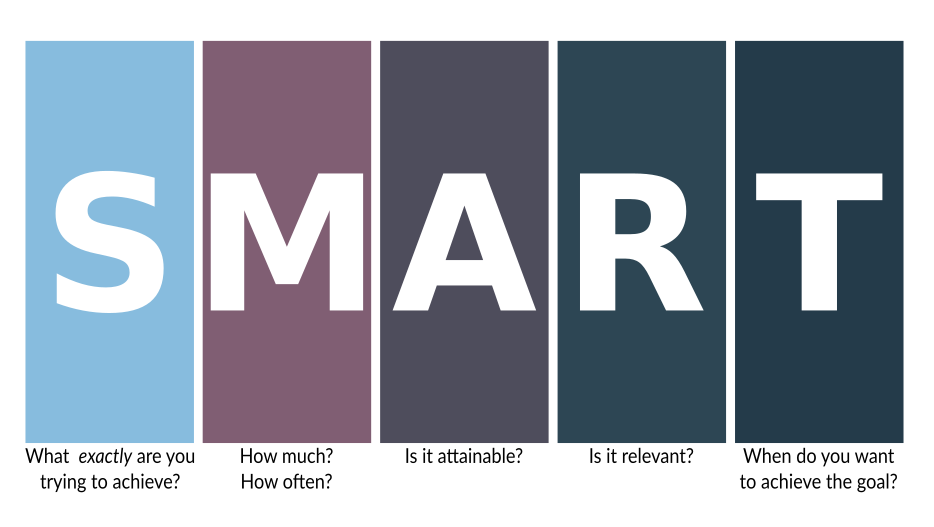Feeling stuck in a rut can be frustrating, but there are several strategies you can try to break free from that state.
Reflection and Self-Awareness

Reflecting and cultivating self-awareness are deeply valuable practices that contribute to personal growth and a deeper understanding of oneself. To embark on this journey, find a quiet and comfortable space where you can truly focus without interruptions. Set aside dedicated time for reflection – this could be a few minutes each day or a more extended period once a week. The consistency of this practice will enable you to gradually delve into your thoughts and emotions.
Journaling is a powerful tool to aid in your self-reflection. Take time to write down your thoughts, feelings, and experiences. Through the act of writing, you give yourself the opportunity to externalize your thoughts, making it easier to analyze them objectively. Use this space to explore your aspirations, fears, challenges, and joys. As you engage in journaling, you’ll notice patterns in your thinking and reactions, shedding light on aspects of your life that you might not have fully recognized.
Mindfulness meditation is another effective technique to enhance self-awareness. Spend time in the present moment, observing your thoughts, emotions, and bodily sensations without judgment. This practice helps you become more attuned to your inner world, providing insights into your mental and emotional landscape. Over time, mindfulness allows you to recognize thought patterns, triggers, and emotional responses, enabling you to respond to situations with greater clarity and control.
Asking yourself open-ended questions is an essential part of reflection. Inquire about your feelings, motivations, and experiences. For instance, you could ask, “How am I feeling right now?” or “What have I learned from recent experiences?” This kind of self-inquiry encourages you to dig deeper into your inner thoughts and emotions, fostering a heightened sense of self-awareness.
Gaining external perspectives is also invaluable. Seek feedback from trusted friends, family members, or mentors who can offer insights about your strengths, weaknesses, and blind spots. They might provide observations that you hadn’t considered, which can lead to a more comprehensive understanding of yourself.
Moreover, analyzing your emotional reactions is a vital part of self-awareness. When you find yourself feeling strongly about something, take a moment to reflect on why you reacted that way. Dive into the underlying beliefs and past experiences that might be influencing your emotions. This process can unveil aspects of yourself that you might not have been consciously aware of.
Challenging assumptions is crucial for personal growth and self-awareness. Examine your beliefs, biases, and preconceived notions. Reflect on where these perspectives come from and whether they serve your development positively. By confronting and adjusting these assumptions, you create space for personal evolution and a deeper understanding of the world around you.
In your reflection, don’t shy away from reviewing your goals. Regularly assess whether your current actions align with your short-term and long-term objectives. This helps you stay focused on what truly matters to you and make any necessary adjustments to your priorities and strategies.
Remember, the path to self-awareness is a continuous journey, not a destination. Approach this process with patience and self-compassion. Embrace your strengths and acknowledge areas for growth. With time, your enhanced self-awareness will empower you to make more informed decisions, build better relationships, and live a life aligned with your authentic self.
Set Clear Goals
Setting clear goals is a transformative process that requires careful consideration and a thoughtful approach. It’s about defining what you want to achieve and creating a roadmap to guide your actions. To begin, take some time to reflect on your aspirations, both short-term and long-term. Consider what truly matters to you and what you envision for your future. This introspection lays the foundation for setting goals that are meaningful and aligned with your values.
Once you have a sense of your aspirations, translate them into specific objectives. A key principle in goal setting is to be as precise as possible. Vague goals, such as “improve my career,” lack the clarity needed for effective planning. Instead, formulate goals like “secure a management position within my current company within the next two years.” This specificity provides a clear target to work towards and enables you to measure your progress.
Making your goals realistic is equally important. While it’s admirable to aim high, setting unattainable goals can lead to frustration and discouragement. Consider your current circumstances, resources, and constraints. Ask yourself if the goal is achievable within a reasonable timeframe, given your commitments and available resources. This doesn’t mean you should shy away from ambitious goals, but rather that you should break them down into smaller, achievable steps.
A useful framework for setting clear goals is the SMART criteria. This acronym stands for Specific, Measurable, Achievable, Relevant, and Time-bound. When your goals meet these criteria, they become well-defined and actionable. Being specific means clearly stating what you intend to achieve. Measurability involves identifying how you’ll track your progress and determine when the goal is met. Your goal should be achievable, considering your current situation. Its relevance should align with your broader aspirations. Lastly, setting a timeframe adds a sense of urgency and helps you allocate your time effectively.

Writing down your goals is a crucial step in the process. Putting your goals in writing solidifies your commitment and clarifies your intentions. Use clear and affirmative language to express your goals, such as “I will” or “I intend to.” This not only reinforces your dedication but also helps create a positive mindset that encourages action.
Creating an action plan is the practical aspect of goal setting. Break down your main goal into smaller, manageable steps. These steps should be sequential and logically lead to the achievement of your larger goal. Think of your action plan as a roadmap that guides you from where you are now to where you want to be. Each step should be actionable and specific, making it easier for you to know exactly what needs to be done.
As you progress, remember to track your journey towards your goals. Regularly assess your progress and celebrate your achievements along the way. Celebrating even the small wins can boost your motivation and keep you engaged in the process. At the same time, be open to adjusting your goals as circumstances change. Flexibility doesn’t indicate failure; it’s a recognition that life is dynamic, and your goals may need adaptation to remain relevant.
In conclusion, setting clear goals is a combination of self-awareness, intentionality, and strategic planning. It’s a dynamic process that involves reflection, specificity, realism, and the SMART criteria. By writing down your goals, creating actionable plans, and tracking your progress, you pave the way for personal growth, accomplishment, and a more focused and purpose-driven life.
Try Something New
Venturing into new experiences can be both exhilarating and challenging, offering a breath of fresh air and an opportunity to break away from routine. When considering trying something new, it’s a journey of self-discovery and growth that involves stepping out of your comfort zone and embracing the unknown.
The first step is recognizing the desire for change and novelty. This might stem from a longing for excitement, personal development, or a break from the mundane. Acknowledging this desire is a significant realization that propels you towards exploring uncharted territory.
Choosing what new endeavor to undertake requires thoughtful consideration. It could involve taking up a new hobby, trying a different form of exercise, embarking on a solo travel adventure, or delving into a creative pursuit. The choice should resonate with your interests and values, as well as align with your aspirations for personal growth.
As you embark on this journey, it’s important to recognize any apprehension or anxiety that might arise. Stepping out of your comfort zone often involves facing uncertainty and the possibility of failure. Acknowledging these feelings and embracing them as part of the process can help you navigate the challenges that come with trying something new.
Preparing for the new experience involves gathering information and setting realistic expectations. Whether it’s researching about the activity, understanding the potential learning curve, or making necessary arrangements, being well-informed can boost your confidence and ease any concerns.
Initiating the new endeavor requires taking that crucial first step. It might involve signing up for a class, booking a trip, or committing to a specific action. Embrace this moment with a sense of curiosity and an open mind, ready to absorb new insights and learn from the experience.
As you immerse yourself in the new activity, practice patience and self-compassion. It’s natural to encounter challenges and moments of frustration. Remember that growth often comes from overcoming obstacles, and perseverance is a key ingredient in the process.
Reflecting on your experiences after trying something new is a valuable part of the journey. Take time to assess how the experience made you feel, what you learned, and how it contributed to your personal growth. This introspection allows you to appreciate your accomplishments and identify areas for further exploration.
In the grand scheme of things, trying something new is not just about the activity itself, but about the self-discovery and expansion it brings. It fosters adaptability, resilience, and a broader perspective on life. Embracing this mindset can lead to a richer and more fulfilling life as you continue to explore and embrace the beauty of new experiences.
Reaching Out for Support

Reaching out for support is a significant and brave undertaking, often accompanied by a mix of emotions. At times, the weight of challenges or the need for guidance can feel overwhelming, making it crucial to connect with others who can offer a helping hand or a listening ear.
When considering reaching out for support, it’s beneficial to begin by understanding your needs. Take a moment to reflect on what precisely you require assistance with. Whether it’s emotional reassurance, practical advice, or a different perspective on a situation, having a clear understanding of your needs will pave the way for a more effective and meaningful interaction.
Selecting the right person to approach is a pivotal aspect of seeking support. Think about individuals in your life who you trust and feel comfortable sharing with. This could encompass close friends, family members, mentors, or professionals such as therapists. The chosen individual should be someone who demonstrates empathy, good listening skills, and a willingness to support you without judgment.
As you initiate the conversation, it’s important to express your intentions candidly. Let the person know that you’re seeking their support and why you’ve chosen to reach out to them specifically. Openness about your feelings, challenges, or uncertainties creates an environment of trust and understanding, enabling the other person to offer relevant and meaningful assistance.
Selecting an appropriate setting for the conversation is essential. Whether you choose to speak in person, over the phone, or via a digital platform, ensure that the environment is conducive to a focused and confidential exchange. The right setting allows both you and the person you’re confiding in to fully engage without distractions or interruptions.
During the conversation, be prepared to share your thoughts and feelings openly. This vulnerability can foster a deeper connection and facilitate a more comprehensive understanding of your situation. It’s important to communicate your needs clearly, whether you’re seeking advice, encouragement, or simply someone to lend a sympathetic ear.
Keep in mind that reaching out for support is a two-way interaction. As you share your thoughts and emotions, also be open to receiving input and guidance. Active listening and considering the insights provided can lead to a more well-rounded perspective on your challenges and potential solutions.
In conclusion, reaching out for support is a courageous endeavor that can lead to profound personal growth and emotional well-being. By understanding your needs, selecting the right person to confide in, expressing your intentions honestly, choosing the appropriate setting, and engaging in open and receptive communication, you’re taking steps toward building meaningful connections and finding the assistance you require. Remember that seeking support is a sign of strength, and the process can lead to valuable insights and solutions that help you navigate through life’s complexities.
Create a Routine Change
Changing your routine can be a transformative endeavor that breathes new energy and perspective into your daily life. Breaking away from the familiar can invigorate your mind, boost your motivation, and help you overcome feelings of stagnation. However, making meaningful changes to your routine requires a strategic and thoughtful approach.
Start by assessing your current routine and reflecting on what aspects of it might be contributing to any sense of monotony or discontent. Consider the activities that bring you joy, the ones that drain your energy, and the opportunities for growth you might be missing. This introspection will serve as the foundation for the changes you’re about to make.
As you embark on the journey of changing your routine, it’s essential to have a clear purpose. What do you hope to achieve through these changes? Whether it’s finding more time for self-care, improving your productivity, or simply injecting more variety into your days, having well-defined goals will help you stay focused and motivated.
Rather than opting for drastic changes all at once, start small. Begin by identifying a few key areas in your routine that you want to modify. Perhaps it’s your morning routine, your work habits, or how you spend your leisure time. By pinpointing these specific areas, you avoid feeling overwhelmed and create a more manageable scope for change.
Introduce new activities or habits into your routine to add freshness and excitement. This could involve trying a different form of exercise, experimenting with a new type of cuisine, or dedicating time to a creative pursuit you’ve always wanted to explore. Integrating these new elements not only introduces novelty but also helps you discover interests you might not have known existed.
Creating a plan is crucial for successful routine change. Break down your larger goal into smaller, actionable steps. For example, if you’re aiming to incorporate exercise into your routine, outline the days, times, and specific activities you’ll engage in. Having a concrete plan makes it easier to follow through and gradually adapt to the changes you’re implementing.
It’s important to remember that flexibility is key. Life is unpredictable, and rigid routines can lead to frustration. Allow room for adjustments and understand that some days might not go as planned. This flexibility prevents you from feeling discouraged and allows you to flow with the natural rhythm of life.
Tracking your progress is a valuable way to stay accountable and motivated. Keep a journal or use a digital app to document your experiences, emotions, and observations as you implement the changes. This practice not only helps you see how far you’ve come but also enables you to identify patterns and areas that might need further adjustment.
Seeking accountability and support from others can greatly enhance your success in changing your routine. Share your intentions with a friend, family member, or colleague who can offer encouragement and hold you accountable. Having someone to share your progress and challenges with adds an element of camaraderie to your journey.
Patience is a virtue in the process of routine change. Habits take time to form, and setbacks are part of the process. Instead of becoming discouraged by temporary lapses, view them as learning opportunities. Embrace self-compassion and remind yourself that change is a gradual journey.
Regular evaluation and adjustment are essential components of changing your routine effectively. Periodically assess how the changes you’ve made are aligning with your goals. Are you experiencing the desired outcomes? Do you need to make further tweaks? Being open to reevaluation ensures that your routine remains adaptive and attuned to your evolving needs.
In conclusion, changing your routine is a deliberate endeavor that requires introspection, goal-setting, and strategic planning. By introducing small but meaningful changes, embracing flexibility, seeking support, and practicing patience, you can transform your routine into a dynamic and enriching aspect of your life. Remember that the process is a journey, and each step you take contributes to a more fulfilling and purpose-driven daily existence.

Remember, breaking free from a rut takes time and effort. Be patient with yourself and stay committed to trying new approaches until you start to see positive changes.


















